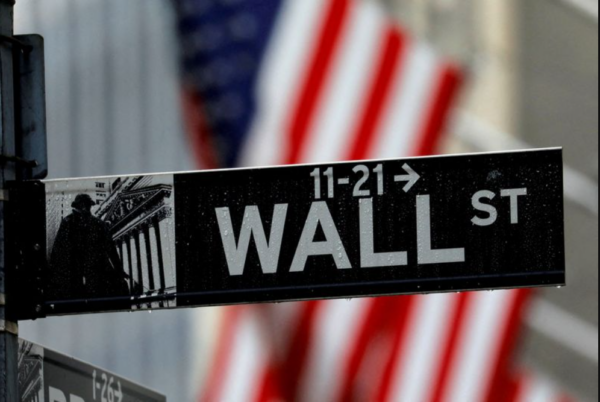
When traders return from their Easter holidays in several countries, here are five topics to watch on Monday, April 10.
Futures on US shares were essentially unchanged ahead of a week that will see the publication of critical economic data, including a new look at consumer and producer prices in the world’s largest economy.
Futures prices for US shares are hovering at zero as vital inflation data is released.

The Dow Futures contract was up 7 points at 5:20 ET (09:20 GMT), the S&P 500 Futures were down 0.01%, and the Nasdaq 100 Futures were down 21 points, or 0.17 percent.
The MSCI’s broadest index of regional shares excluding Japan rose 0.43 percent, while the Nikkei in Japan rose 0.43 percent. Markets in Hong Kong, Australia, and Europe were closed on Easter Monday.
Consumer prices are expected to rise 5.2% year on year and 0.3% month on month in March, according to economists. The headline number, which includes volatile food and energy expenses, is expected to have climbed by 5.6% year on year and 0.4% month on month. The statistics will be made public on Wednesday.
The figure will almost certainly influence expectations for the Federal Reserve to ease monetary policy. Traders will also get the opportunity to see the minutes from the Federal Reserve’s March policy meeting.
A carefully watched March labor-market data found that hiring in the United States remained strong as unemployment fell. The New York Stock Exchange was closed when the Labor Department data was released on Friday.
The IMF holds a meeting to address inflation.
The International Monetary Fund and the World Bank will hold their annual spring conference this week in Washington. The high-level meeting of central bankers and financial executives is expected to focus on steps to rein in rising prices while maintaining the global banking system’s stability.
The IMF’s prognosis is not exactly upbeat. Kristalina Georgieva, the fund’s managing director, warned in a speech last week that the global economy will likely face several years of weak growth, citing growing geopolitical tensions and the potential of increased trade protectionism among major nations.
Janet Yellen, Treasury Secretary of the United States, and Andrew Bailey, Governor of the Bank of England, will be prominent lecturers at the next event.
Repercussions of the banking crisis

Large financial institutions are set to start off this week’s earnings season later this week.
JPMorgan (NYSE:NYSE: JPM) and Citigroup (NYSE:NYSE: C) will report on Friday, followed by Goldman Sachs (NYSE:NYSE: GS), Morgan Stanley (NYSE:NYSE: MS), and Bank of America (NYSE:NYSE: BAC).
The consequences of Silicon Valley Bank’s failure last month are expected to get the majority of attention. The collapse shook the financial services industry, with investors particularly concerned about the likelihood of massive bank runs at smaller regional lenders.
Since then, the sector has returned to a state of calm. The next results will almost certainly give a new perspective on the magnitude of the current turmoil’s ramifications.
Chinese IPOs are surging as a result of new listing regulations.
The first batch of Chinese stocks to have initial public offerings under a new, more relaxed regime of listing requirements rose on Monday, indicating that the policies may help boost China’s position as a key destination for foreign stock trading.
Shenzhen CECport Technologies Co., an electronic component wholesaler, rocketed by up to 239% to top the gains among the 10 stocks that launched with this upgraded method.
Chinese businesses can now list on the Shanghai and Shenzhen stock exchanges’ major boards without first receiving regulatory approval. Also, the IPO pricing restriction of 23 times profits per share was removed. Caps on the first day of trade were also removed.
The shift to a “registration-based listings system” is seen as a method to let enterprises from more conventional industries in China to benefit from a set of policies that had previously benefitted the country’s fast expanding technology firms. As a result, funding for these more traditional businesses may become easier.
Oil prices have remained constant as uncertainty over demand balances OPEC+ output restrictions.
Crude oil prices stayed reasonably constant to begin the week as traders assessed the supply outlook in the aftermath of OPEC and its partners’ surprise output cut.
At 5:10 a.m. EST, US oil prices were up 0.32 percent to $80.96 per barrel, while Brent crude futures were up 0.21 percent to $85.30 per barrel.
After OPEC+’s declaration earlier this month that a new round of output curbs will begin in May, oil prices rose by more than 6% last week. Petroleum oil inventories in the United States fell faster than expected.
The picture for demand, on the other hand, remains somewhat hazy, with traders waiting to see what Wednesday’s US inflation statistics will mean for global growth as a whole.
